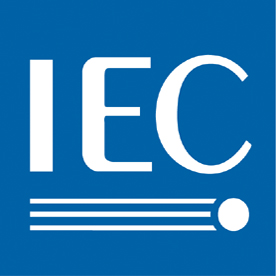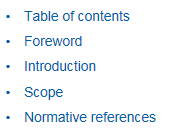ISO 80601-2-87:2021
Medical electrical equipment - Part 2-87: Particular requirements for the basic safety and essential performance of high frequency ventilators
Abstract
This document applies to the basic safety and essential performance of a high-frequency ventilator (HFV) in combination with its accessories, hereafter referred to as ME equipment:
- intended for use in an environment that provides specialized care for patients whose conditions can be life-threatening and who can require comprehensive care and constant monitoring in a professional healthcare facility;
NOTE 1 For the purposes of this document, such an environment is referred to as a critical care environment. High-frequency ventilators for this environment are considered life-sustaining.
NOTE 2 For the purposes of this document, such a high-frequency ventilator can provide transport within a professional healthcare facility (i.e., be a transit-operable ventilator).
NOTE 3 A high-frequency ventilator intended for use in transport within a professional healthcare facility is not considered as a ventilator intended for the emergency medical services environment.
- intended to be operated by a healthcare professional operator;
- intended for those patients who need differing levels of support from artificial ventilation including ventilator-dependent patients; and
- capable of providing more than 150 inflations/min.
There are three principal designations of HFV:
- high-frequency percussive ventilation [HFPV, with a typical HFV frequency of (60 to 1 000) HFV inflations/min];
- high-frequency jet ventilation [HFJV, with a typical HFV frequency of (100 to 1 500) HFV inflations/min]; and
- high-frequency oscillatory ventilation [HFOV, with a typical HFV frequency of (180 to 1200) HFV inflations/min and typically having an active expiratory phase].
Additionally, HFV designations can be combined together or with ventilation at rates less than 150 inflations/min.
*A high-frequency ventilator is not considered a physiologic closed loop-control system unless it uses a physiological patient variable to adjust the ventilation therapy settings.
This document is also applicable to those accessories intended by their manufacturer to be connected to an HFV breathing system, or to a high-frequency ventilator, where the characteristics of those accessories can affect the basic safety or essential performance of the high-frequency ventilator.
If a clause or subclause is specifically intended to be applicable to ME equipment only, or to ME systems only, the title and content of that clause or subclause will say so. If that is not the case, the clause or subclause applies both to ME equipment and to ME systems, as relevant.
Hazards inherent in the intended physiological function of ME equipment or ME systems within the scope of this document are not covered by specific requirements in this document except in 7.2.13 and 8.4.1 of IEC 60601-1:2005.
NOTE 4 Additional information can be found in 4.2 of IEC 60601-1:2005+AMD1:2012.
This document is not applicable to ME equipment that is intended solely to augment the ventilation of spontaneously breathing patients within a professional healthcare facility.
This document does not specify the requirements for:
- non-high-frequency ventilators or accessories which provide conventional ventilation for use in critical care environments, which are given in ISO 80601-2-12 [23];.
NOTE 5 An HFV can incorporate conventional critical care ventilator operational modes, in which case ISO 80601-2-12 is applicable to those modes.
- ventilators or accessories intended for anaesthetic applications, which are given in ISO 80601-2-13 [24];
- ventilators or accessories intended for the emergency medical services environment, which are given in ISO 80601-2-84, the replacement for ISO 10651-3 [13];
NOTE 6 An HFV can incorporate EMS ventilator capability.
- ventilators or accessories intended for ventilator-dependent patients in the home healthcare environment, which are given in ISO 80601-2-72 [26];
- ventilators or accessories intended for home-care ventilatory support devices, which are given in ISO 80601-2-79 [27] and ISO 80601-2-80 [28], the replacements for ISO 10651-6 [15];
- sleep apnoea breathing therapy ME equipment, which are given in ISO 80601-2-70 [25];
- bi-level positive airway pressure (bi-level PAP) ME equipment;
- continuous positive airway pressure (CPAP) ME equipment;
- respiratory high-flow ME equipment, which are given in ISO 80601-2-90-1); and
- cuirass or iron-lung ventilation
This document is a particular standard in the IEC 60601 series, the IEC 80601 series and the ISO 80601 series.
1) Under preparation. Stage at the time of publication: ISO/DIS 80601-2-90:2020.
- intended for use in an environment that provides specialized care for patients whose conditions can be life-threatening and who can require comprehensive care and constant monitoring in a professional healthcare facility;
NOTE 1 For the purposes of this document, such an environment is referred to as a critical care environment. High-frequency ventilators for this environment are considered life-sustaining.
NOTE 2 For the purposes of this document, such a high-frequency ventilator can provide transport within a professional healthcare facility (i.e., be a transit-operable ventilator).
NOTE 3 A high-frequency ventilator intended for use in transport within a professional healthcare facility is not considered as a ventilator intended for the emergency medical services environment.
- intended to be operated by a healthcare professional operator;
- intended for those patients who need differing levels of support from artificial ventilation including ventilator-dependent patients; and
- capable of providing more than 150 inflations/min.
There are three principal designations of HFV:
- high-frequency percussive ventilation [HFPV, with a typical HFV frequency of (60 to 1 000) HFV inflations/min];
- high-frequency jet ventilation [HFJV, with a typical HFV frequency of (100 to 1 500) HFV inflations/min]; and
- high-frequency oscillatory ventilation [HFOV, with a typical HFV frequency of (180 to 1200) HFV inflations/min and typically having an active expiratory phase].
Additionally, HFV designations can be combined together or with ventilation at rates less than 150 inflations/min.
*A high-frequency ventilator is not considered a physiologic closed loop-control system unless it uses a physiological patient variable to adjust the ventilation therapy settings.
This document is also applicable to those accessories intended by their manufacturer to be connected to an HFV breathing system, or to a high-frequency ventilator, where the characteristics of those accessories can affect the basic safety or essential performance of the high-frequency ventilator.
If a clause or subclause is specifically intended to be applicable to ME equipment only, or to ME systems only, the title and content of that clause or subclause will say so. If that is not the case, the clause or subclause applies both to ME equipment and to ME systems, as relevant.
Hazards inherent in the intended physiological function of ME equipment or ME systems within the scope of this document are not covered by specific requirements in this document except in 7.2.13 and 8.4.1 of IEC 60601-1:2005.
NOTE 4 Additional information can be found in 4.2 of IEC 60601-1:2005+AMD1:2012.
This document is not applicable to ME equipment that is intended solely to augment the ventilation of spontaneously breathing patients within a professional healthcare facility.
This document does not specify the requirements for:
- non-high-frequency ventilators or accessories which provide conventional ventilation for use in critical care environments, which are given in ISO 80601-2-12 [23];.
NOTE 5 An HFV can incorporate conventional critical care ventilator operational modes, in which case ISO 80601-2-12 is applicable to those modes.
- ventilators or accessories intended for anaesthetic applications, which are given in ISO 80601-2-13 [24];
- ventilators or accessories intended for the emergency medical services environment, which are given in ISO 80601-2-84, the replacement for ISO 10651-3 [13];
NOTE 6 An HFV can incorporate EMS ventilator capability.
- ventilators or accessories intended for ventilator-dependent patients in the home healthcare environment, which are given in ISO 80601-2-72 [26];
- ventilators or accessories intended for home-care ventilatory support devices, which are given in ISO 80601-2-79 [27] and ISO 80601-2-80 [28], the replacements for ISO 10651-6 [15];
- sleep apnoea breathing therapy ME equipment, which are given in ISO 80601-2-70 [25];
- bi-level positive airway pressure (bi-level PAP) ME equipment;
- continuous positive airway pressure (CPAP) ME equipment;
- respiratory high-flow ME equipment, which are given in ISO 80601-2-90-1); and
- cuirass or iron-lung ventilation
This document is a particular standard in the IEC 60601 series, the IEC 80601 series and the ISO 80601 series.
1) Under preparation. Stage at the time of publication: ISO/DIS 80601-2-90:2020.
Additional information
| Publication type | International Standard |
|---|---|
| Publication date | 2021-04-12 |
| Edition | 1.0 |
| Available language(s) | English, French |
| TC/SC | TC 62/SC 62D - Particular medical equipment, software, and systemsrss |
| ICS | 11.040.10 - Anaesthetic, respiratory and reanimation equipment |
| Stability date | 2025 |
| Pages | 136 |
| File size | 3067 KB |
The following test report forms are related:
More information
Share this page
Share your publications
Learn how to share your publications with your colleagues, using networking options.
Payment information
Our prices are in Swiss francs (CHF). We accept all major credit cards (American Express, Mastercard and Visa, JCB and CUP), PayPal and bank transfers as form of payment.
Keep in touch
Keep up to date with new publication releases and announcements with our free IEC Just Published email newsletter.
Contact customer services
Please send your enquiry by email or call us on +41 22 919 02 11 between 09:00 – 16:00 CET Monday to Friday.

